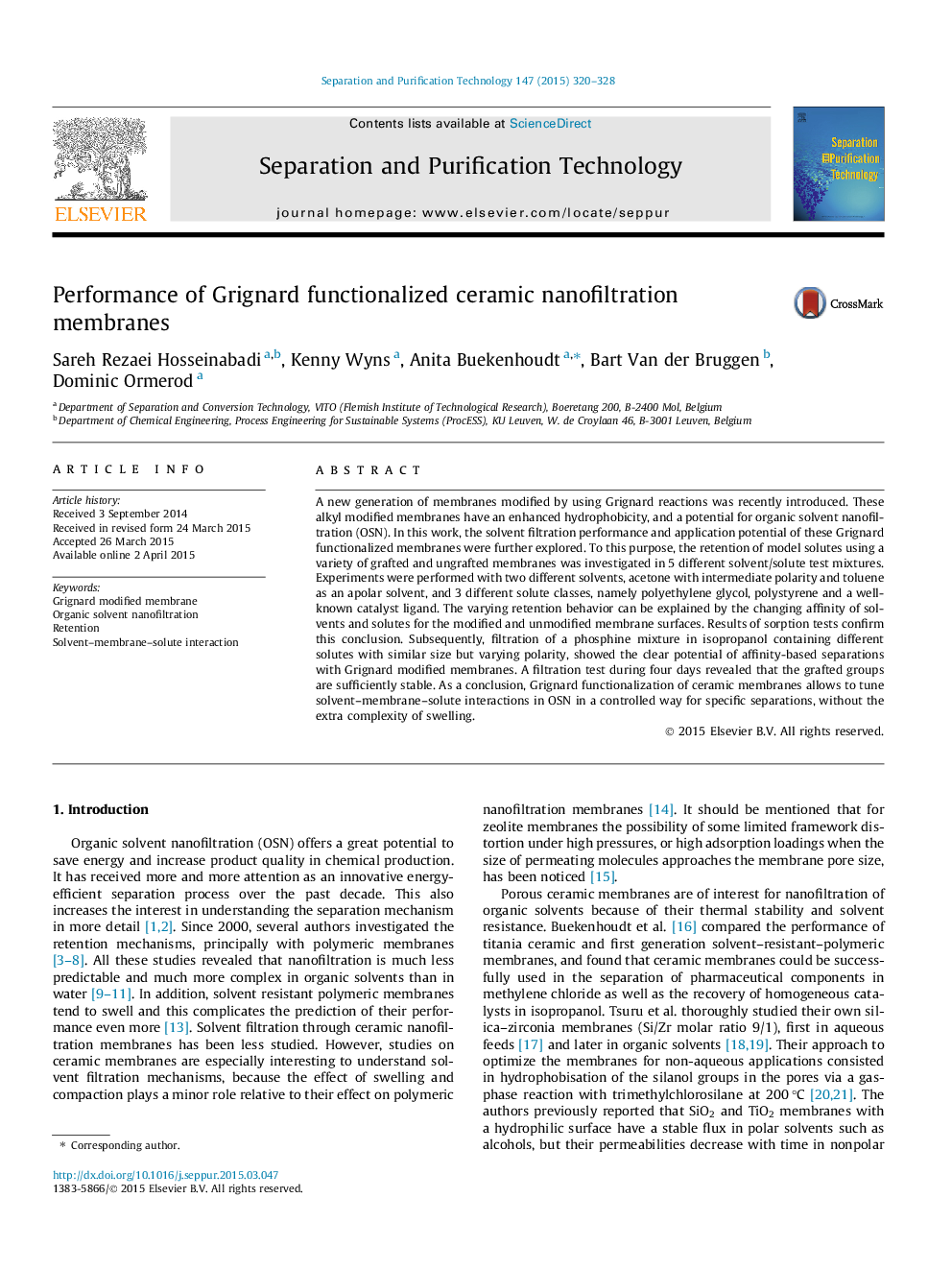| Article ID | Journal | Published Year | Pages | File Type |
|---|---|---|---|---|
| 640485 | Separation and Purification Technology | 2015 | 9 Pages |
Abstract
A new generation of membranes modified by using Grignard reactions was recently introduced. These alkyl modified membranes have an enhanced hydrophobicity, and a potential for organic solvent nanofiltration (OSN). In this work, the solvent filtration performance and application potential of these Grignard functionalized membranes were further explored. To this purpose, the retention of model solutes using a variety of grafted and ungrafted membranes was investigated in 5 different solvent/solute test mixtures. Experiments were performed with two different solvents, acetone with intermediate polarity and toluene as an apolar solvent, and 3 different solute classes, namely polyethylene glycol, polystyrene and a well-known catalyst ligand. The varying retention behavior can be explained by the changing affinity of solvents and solutes for the modified and unmodified membrane surfaces. Results of sorption tests confirm this conclusion. Subsequently, filtration of a phosphine mixture in isopropanol containing different solutes with similar size but varying polarity, showed the clear potential of affinity-based separations with Grignard modified membranes. A filtration test during four days revealed that the grafted groups are sufficiently stable. As a conclusion, Grignard functionalization of ceramic membranes allows to tune solvent-membrane-solute interactions in OSN in a controlled way for specific separations, without the extra complexity of swelling.
Related Topics
Physical Sciences and Engineering
Chemical Engineering
Filtration and Separation
Authors
Sareh Rezaei Hosseinabadi, Kenny Wyns, Anita Buekenhoudt, Bart Van der Bruggen, Dominic Ormerod,
